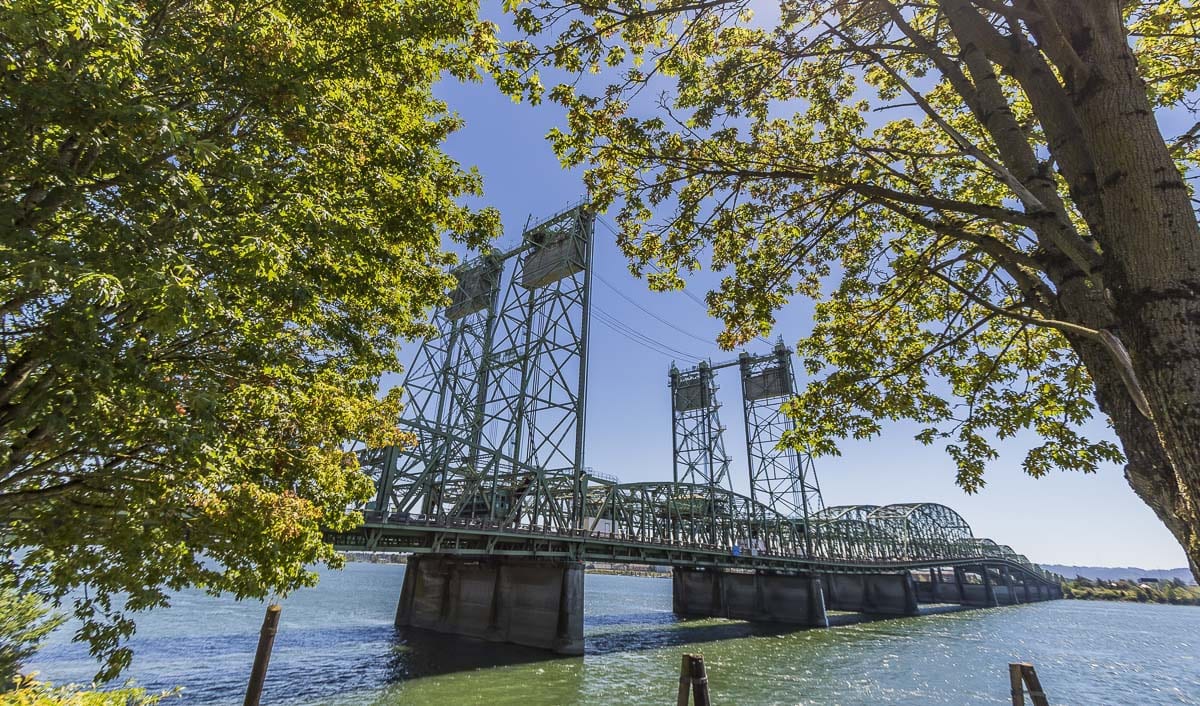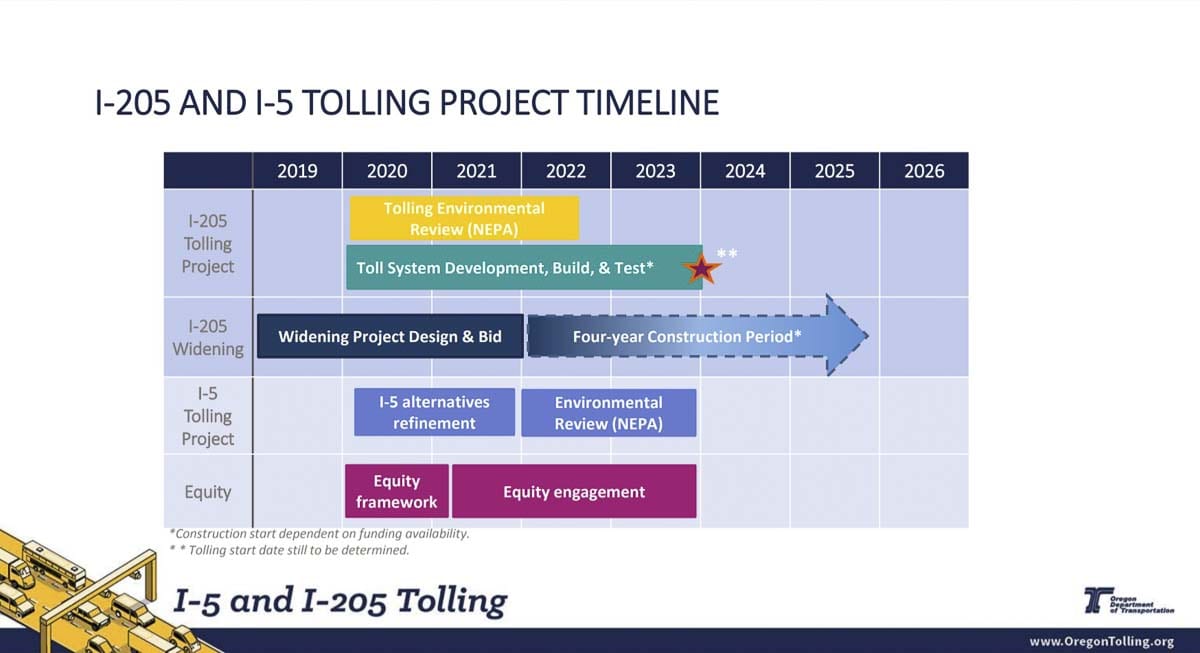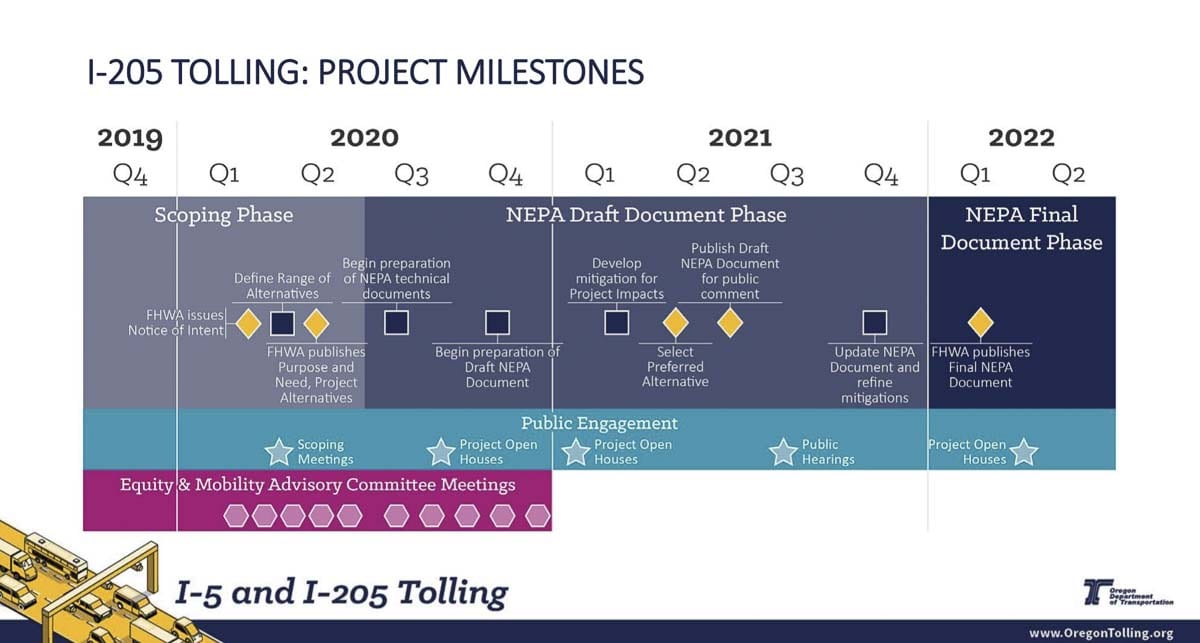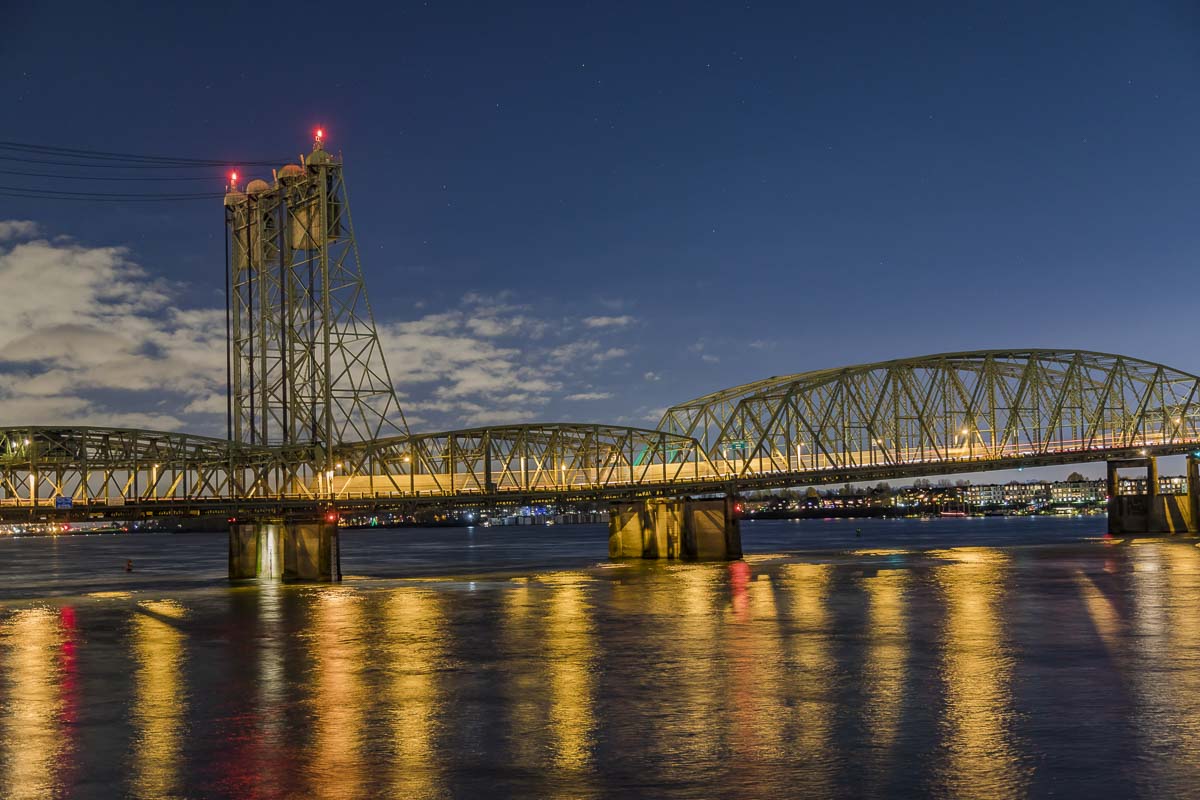The only wheels moving more slowly than the ones on I-5 and I-205, it seems, are those of the federal government
VANCOUVER — The timeline for tolls on freeways in Portland has been pushed back, according to the most recent update provided by Oregon transportation officials at the February meeting of the Southwest Washington Regional Transportation Council (RTC).

“We’re years away from this. We don’t know exactly what this looks like, or how it’s going to work,” said Rian Windsheimer, manager for the Portland region of Oregon’s Department of Transportation (ODOT). “And that’s why we’re here to make sure that we’re getting your input.”
The RTC has been involved in the process of planning for tolls in Oregon on an advisory level, said Executive Director Matt Ransom, including participating in some modeling studies, and providing a letter with feedback from the council.
“But we anticipate that, at a technical level, and also at a policy level, that coordination will pick up,” Ransom said.
News of Oregon’s plan to seek permission to implement tolling on parts of I-5 and I-205 in the Portland area first made headlines in late 2017, after the state legislature approved a transportation bill which directed the Oregon Transportation Commission to begin implementing the process of tolling the two freeways.
The goal was two-fold: raise revenue for transportation projects elsewhere in the region, and manage congestion on the freeways in Portland.
“Congestion pricing has been proven to be a tool that can be effective in that regard,” said Mandy Putney, ODOT’s Region 1 policy and development manager. “So as we’re looking at both of these locations, we want to understand what the implications are in terms of managing demand as well as revenue.”

A public advisory commission plans in the Summer of 2018 to toll part of I-205 near the Abernathy Bridge at Oregon City, and a seven-mile stretch of I-5 from approximately Going Street on the north side, to Multnomah Street south of downtown Portland. Currently, plans for I-5 are approximately 18-20 months behind I-205.
“There are still questions about where exactly is the right place to begin and end,” said Putney. “And how would I-84 and other intersecting interstates be affected.”
The other element being considered surrounds the I-5 Bridge replacement project, and plans to use tolling as a means to pay for it. Putney said the agency wants to wait a bit longer to see how that plays out before deciding how to move forward.
ODOT expects to begin a federal environmental impact study on I-205 this Spring, along with a series of stakeholder meetings. There will also be a group formed to look at the impacts of tolling on marginalized populations. Putney said there will also be a new travel preferences survey done. The current data they have for how commuters would prefer to get around was completed in 2009.
The National Environmental Policy Act (NEPA) process is expected to last two years, after which ODOT would still need to finalize development, testing, and build-out of the tolling system. That means the earliest tolls could be implemented on I-205 would be late 2023, with I-5 trailing behind into 2024 or 2025.
Despite the length of the process, there remain few specifics about how tolling would work in Oregon, who would manage it, and whether more can be done to assist the thousands who live in Clark County but work in Portland.
“It’s been frustrating, I think, from ODOT’s perspective, and I think from the public and stakeholder perspective, because we have all these questions,” Windsheimer told the council. “How’s it exactly going to work? Are you going to have a free time? Is it going to be congestion based? And all this stuff is part of what we’re hoping to get through as we work through this process.”

Clark County Councilor Gary Medvigy was the only RTC member to speak up, asking what work is being done to help employers gear up for tolling, including providing incentives to make scheduling changes.
“We know right now that businesses already are responsive,” said Putney. “They are responsive to the congestion on the roads today, and many of them are offering flexible work times, they’re offering work from home opportunities … And I think it’s important to also remember that really there is a benefit as well. It “might have a cost associated to it, but you are then given a much more reliable trip.’’
Medvigy also raised concerns with the high overhead involved in tolling. Some systems, he said, have seen up to 40 percent of the revenue raised go to administration and collection costs.
“Have they been able to come up with technology that won’t cost so much, and basically waste our tolling dollars?” Medvigy asked.

Putney said that is going to be part of the process going forward, but that there are no specifics to offer right now about how much the system might cost to maintain.
ODOT is gearing up to begin a series of community and stakeholder meetings later this spring, and will reach out to groups such as RTC, and leadership in Clark County to continue soliciting input.
“We’re open to ideas,” she said, “so if you have ideas of specific ways that we can reach your communities, we’re happy to hear them now or in the future.”




